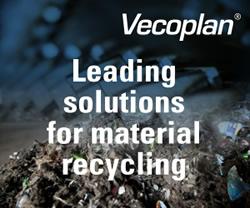CalCharge expands energy storage initiative as California boosts renewable goals
Southern California Edison, UC San Diego join push for battery breakthroughs
SAN DIEGO. - CalCharge is expanding its network of innovators to include one of the nations largest utilities and a top university with a world-class engineering school—all as California significantly expands its renewable energy goals and clean-energy storage capacity. The independent public-private partnership designed to accelerate breakthrough energy storage technologies took the stage at the Energy Storage North America conference today to announce new members Southern California Edison (SCE) and the University of California, San Diego.
"The California Senate just passed a law upping the state's renewable portfolio standard to 50 percent by 2030 [1] and better batteries are integral to meeting this new goal," said Danny Kennedy, president of CalCharge. "The resources and expertise at Southern California Edison and UC San Diego are a valuable addition to the CalCharge family and bring us closer to building a new economy where clean energy is maximized—and is affordable and accessible to everyone."
The new members—including CalCharges first utility member—join a roster that ranges from Bay Area start-ups to multinational giants like Toyota Motor Corporation and the electronics manufacturer Bosch. In addition to unparalleled networking opportunities, CalCharge members get streamlined access to scientists and facilities at world-class institutions including Lawrence Berkeley National Laboratory, SLAC National Accelerator Laboratory, and Lawrence Livermore National Laboratory.
"Together we can seek a future where energy use is cleaner and more reliable, our customer choice is plentiful and our customer lives will be better," said Stuart Hemphill, senior vice president of power supply and operational services at SCE, to a room full of innovators at the Energy Storage North America Conference. SCE made headlines last year when, in a bid to meet a landmark directive to California investor-owned utilities to put 1.325 GW of storage on the grid by 2020, it completed the largest grid-connected energy storage purchase in U.S. history. [2]
"We need to up our game, too, if were going to meet the needs of the 21st century grid, and were going to need [energy storage companies] help there," said Hemphill.
California is a world leader in the energy storage sector, with over 130 companies working to advance battery technology. CalCharge acts as the center of gravity for the energy storage cluster, providing valuable connections to each other and to national lab resources. Twenty-seven organizations are now members of CalCharge.
"We believe in bridging the gap between research institutions and the real world," said NanoEngineering professor Shirley Meng, who leads the Sustainable Power and Energy Center at the UC San Diego Jacobs School of Engineering. "UC San Diego has a micogrid that serves as a real-world test bed, and we have one of the most diverse energy-storage research portfolios of any university in the world. For us, CalCharge opens a new door for exciting collaboration between innovators and researchers on energy storage."
Energy storage is also crucial for expanding clean energy in the consumer and transportation markets. New technologies make new applications possible, and CalCharge is working to speed up innovation.
"Developing an entirely new commercial energy storage technology for EVs or the grid is inherently a multidisciplinary task. CalCharge is helping to make California the leader in this important effort by facilitating collaboration among the very large number of outstanding laboratories and researchers in the state who are making technical contributions to the field," said Dan Addison, CEO of Liox, a company in Pasadena focused on next generation electrochemical energy storage systems for EVs.
The economic promise of energy storage is also attracting organizations and companies outside of the battery industry. MPEG LA—world leaders in patent licensing—became a CalCharge member to tap into the emerging sector.
"Energy storage is a critical piece of the clean energy economy, and in order to accelerate innovation and growth we need to connect partners across the ecosystem," said Daniel Abraham, vice president of science and business strategy at MPEG LA. "There is incredible potential to support the sector, and CalCharge can help us be a part of it. We are pleased for the opportunity to work with CalCharge in support of its mission to promote energy storage technologies to a wide market."
As companies work to develop the right batteries for the right applications, CalCharge is helping accelerate innovation.
"Whether its incorporating intermittent renewable energy into the grid; expanding clean transportation; or helping people decarbonize their lives at home, work and school, energy storage is key," said Kennedy.
Featured Product

